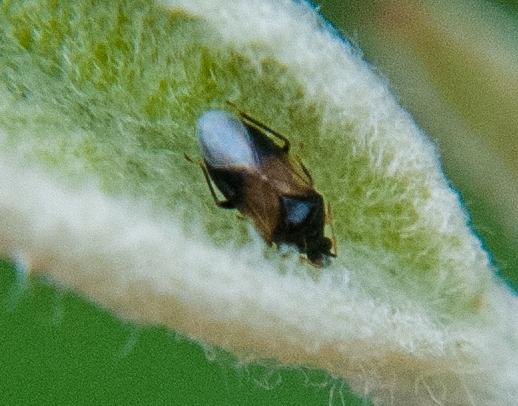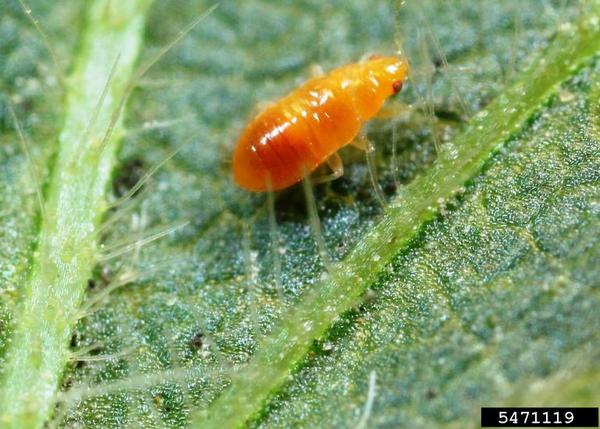Background and Description
There are several species of minute pirate bugs in the Southeast, but Orius insidiosus is the most common. Adults are true bugs around 1/10 inch (2.5mm) long, with an orange, black, and white pattern on the wings. Nymphs are yellow to red in their early instars but turn brown as they develop. Eggs are clear to milky white and very tiny, about 1/50 inch (0.5mm) long.
Life history
Minute pirate bugs overwinter as adults in leaf litter and other debris. They become active and start feeding in spring, with females laying between 100 to 150 eggs 2 to 3 days after mating. In about 5 days eggs hatch and nymphs begin passing through 5 instars over the next 14 to 19 days. In NC pirate bugs may be active through October, completing several generations per season.
Predation
Both adults and larvae feed on green apple and spirea aphids, European red mites and spider mites, insect eggs, and soft-bodied insects throughout the course of a season.
Publication date: Feb. 23, 2015
N.C. Cooperative Extension prohibits discrimination and harassment regardless of age, color, disability, family and marital status, gender identity, national origin, political beliefs, race, religion, sex (including pregnancy), sexual orientation and veteran status.



